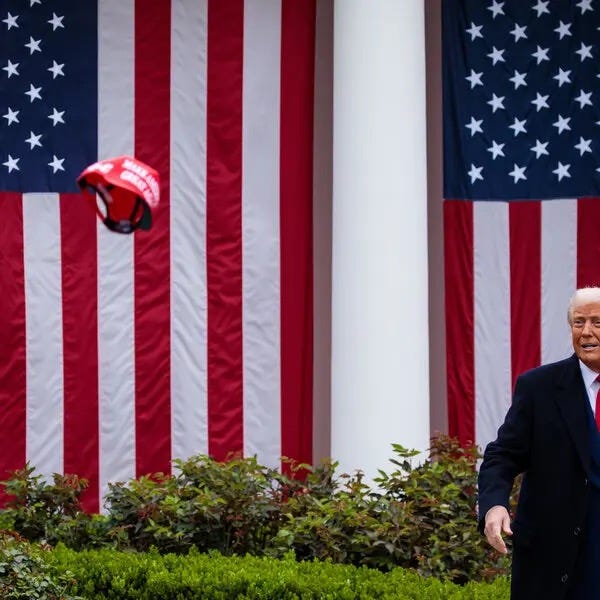Markets are starting to breathe again—and not just because Jay Powell decided not to break up with the economy on live TV.
After weeks of tariff threats, Fed-bashing, and the kind of volatility that gives real estate investors and CFOs matching ulcers, President Trump appears to be backing away from the ledge. Whether that’s a political pivot or just another round of “will he or won’t he” policy theater is up for debate. But markets, at least for now, are choosing to see the glass as half full—and that glass is filled with imported tequila, tariff-free (for now).
Let’s break down the bull and bear case for what’s next.
The Bull Case: Trump Hits the Brakes
Investors and CEOs alike are betting that the Trump administration is finally feeling the heat from its own economic blowtorch. Even Elon Musk—who’s usually busy launching satellites or picking fights on X—is weighing in against the trade war.
Here’s why bulls are charging:
-
Stocks popped 4.2% over the past two days, largely on the hope that tariffs on Chinese goods and auto imports could be rolled back or at least paused. The Financial Times and Wall Street Journal both dropped breadcrumbs that the White House might be blinking.
-
Corporate pushback is working. CEOs from Walmart, Home Depot, and Target reportedly warned Trump that supply chains are snarled, prices are climbing, and empty shelves aren’t a great look headed into election season.
-
Trump’s approval rating is slipping, especially on economic issues, according to Pew. Tariffs aren’t winning hearts—or votes.
-
Moderate voices inside the administration like Scott Bessent and Commerce Secretary Howard Lutnick are gaining ground, nudging Trump away from the economic ledge—and keeping Jay Powell in the job, thank God.
If you’re long on market stability or just trying to underwrite a deal without factoring in trade apocalypse risk, this is welcome news.
The Bear Case: Don’t Pop the Champagne Yet
Of course, there’s another, slightly more cynical view—one we’re all too familiar with: Trump’s policy instincts are, to put it politely, unpredictable. Yesterday’s retreat can quickly become today’s escalation.
The bears remind us:
-
The S&P is still down 4.6% since April 2, when Trump first lobbed new reciprocal tariff threats. So let’s not pretend we’re in the clear.
-
No official rollbacks have been signed, and Trump has shown time and time again he’s willing to stomach some market pain if it means chasing long-term trade barriers.
-
New tariffs are still looming—particularly on auto parts, pharma, and tech. May 3 is a key date to watch.
-
Trade negotiations remain… complicated. Britain, for example, isn’t exactly lining up for a deal. Other countries smell hesitation and are playing the long game.
So while markets may be cheering the vibe shift, we’re still in the murky middle.
What This Means for Us
As real estate investors and developers, we live and die by capital flows, supply chain reliability, and economic predictability. When tariffs threaten everything from HVAC systems to imported tile, it hits our bottom line. The Fed matters, but trade disruptions change real pro formas—and real lives.
So I want to hear from you:
Have tariffs hit your business?
-
Have you changed suppliers?
-
Negotiated lower pricing?
-
Hit pause on hiring or development timelines?
-
Moved manufacturing back to the U.S.?
-
Or—have tariffs actually helped you gain a pricing or sourcing edge?
Hit reply or drop me a line. I’m building a follow-up piece and want to include your on-the-ground insights.
Because in this market, the more we share, the smarter we all build.
Daniel Kaufman is President of Kaufman Development. He writes about markets, strategy, and how policy hits the ground in the real world. Read more at www.danielkaufmanre.com and www.dkaufmandevelopment.com.
